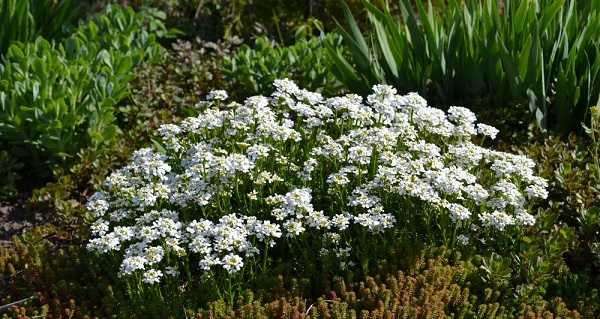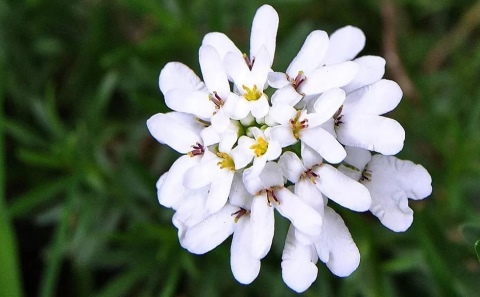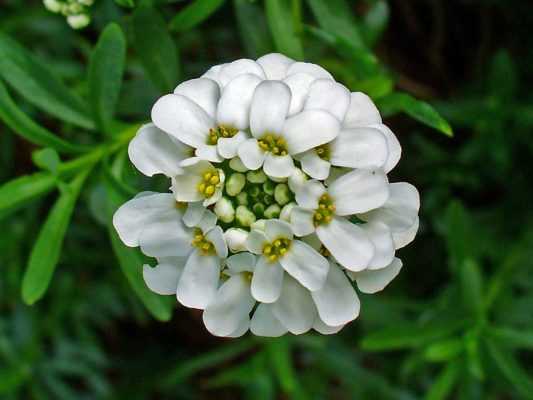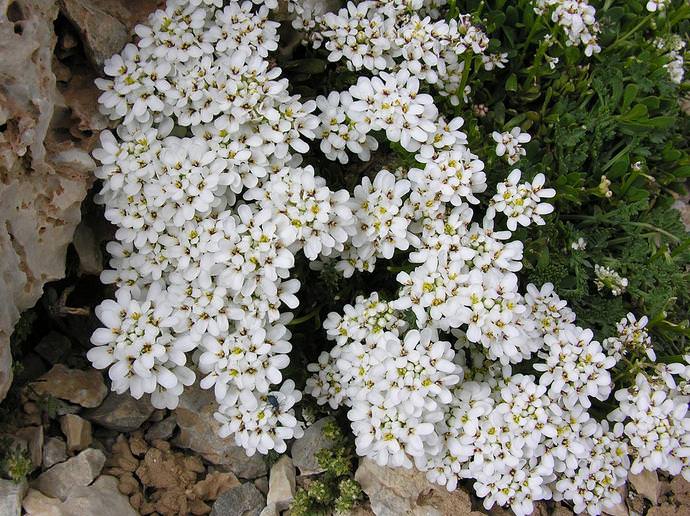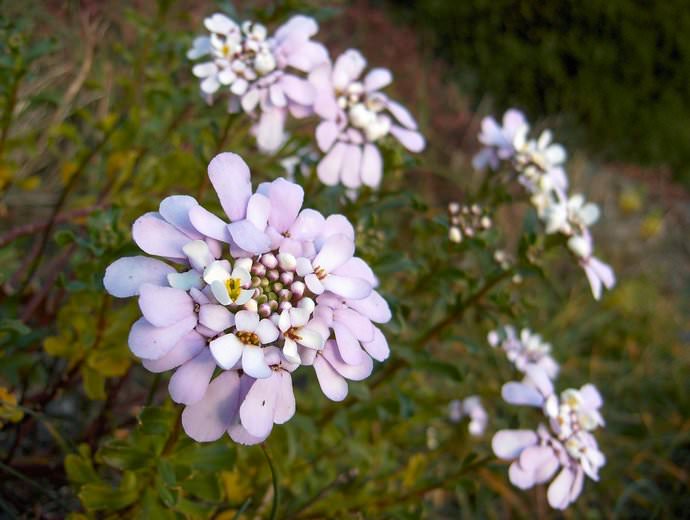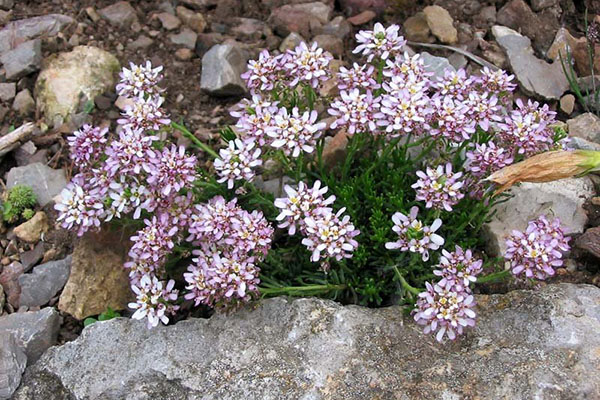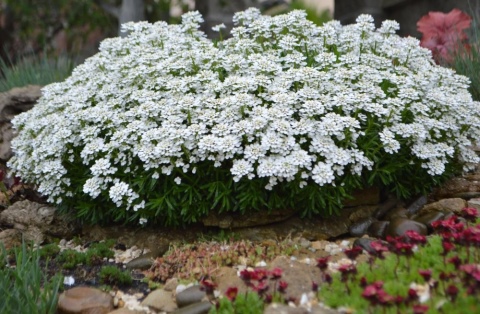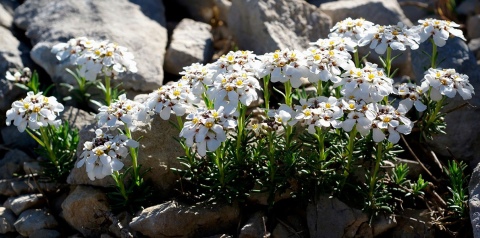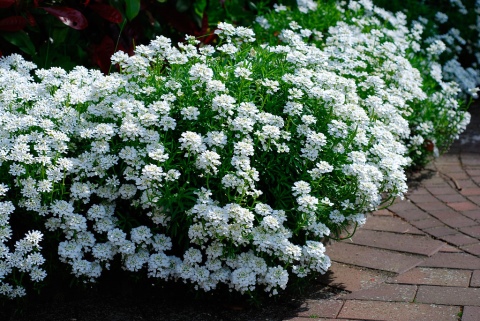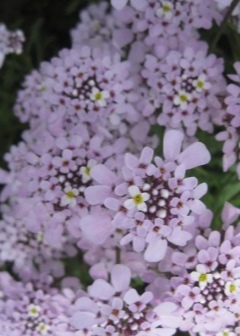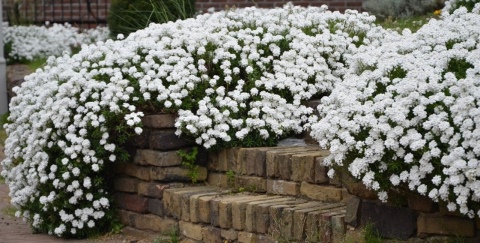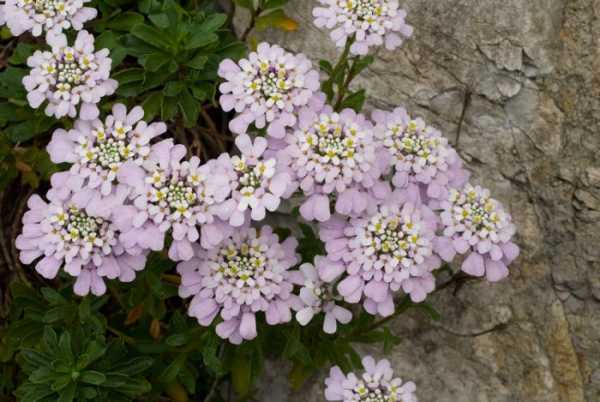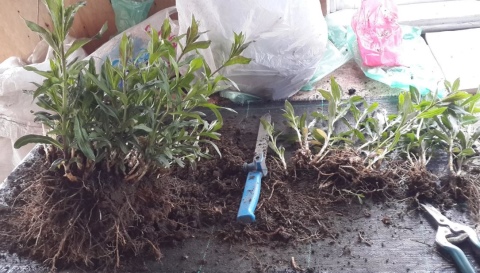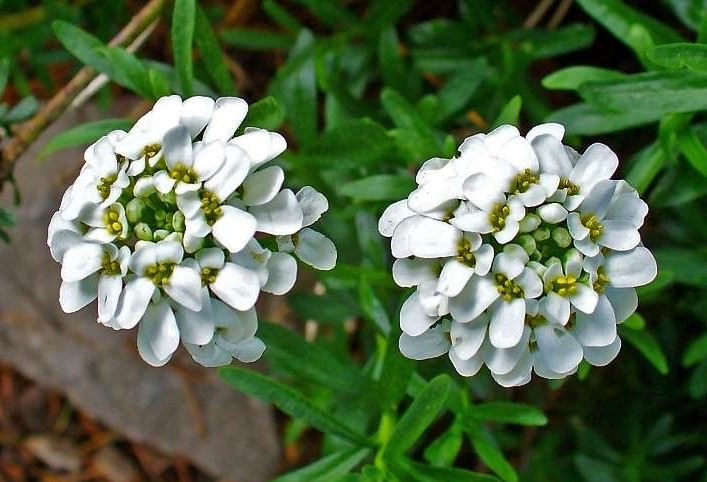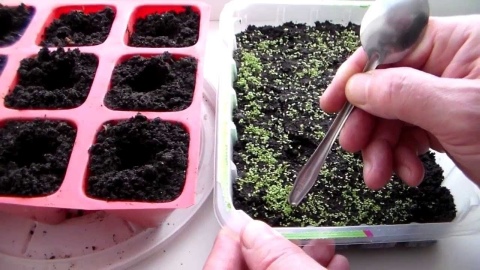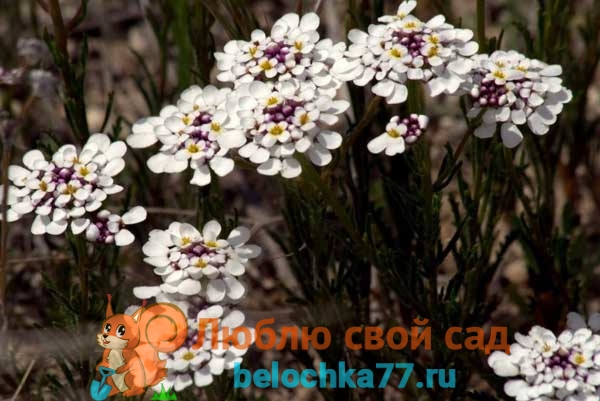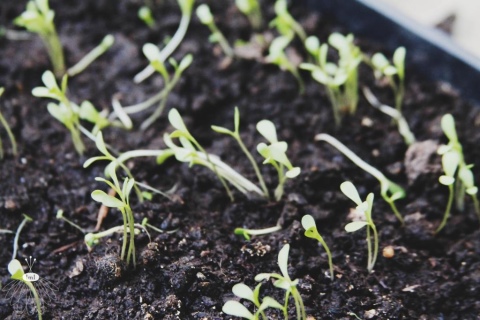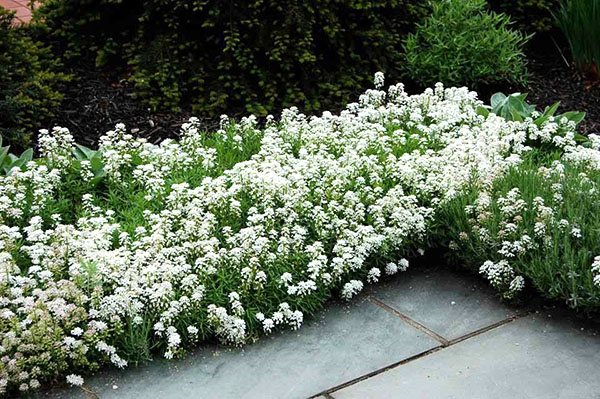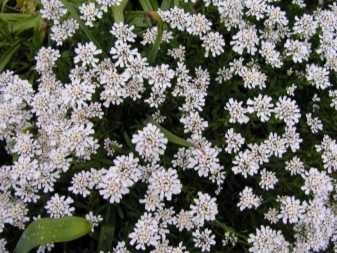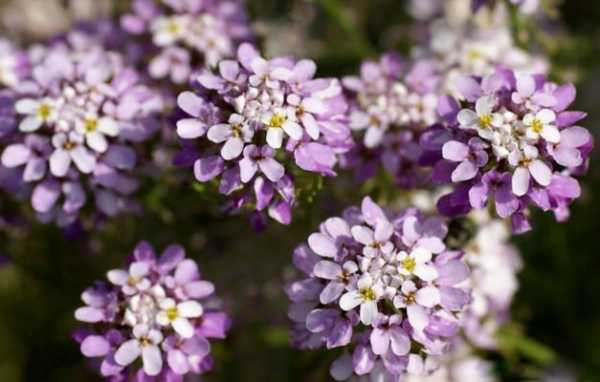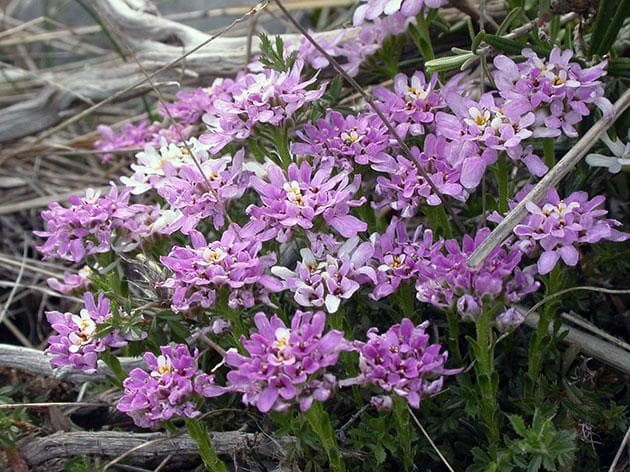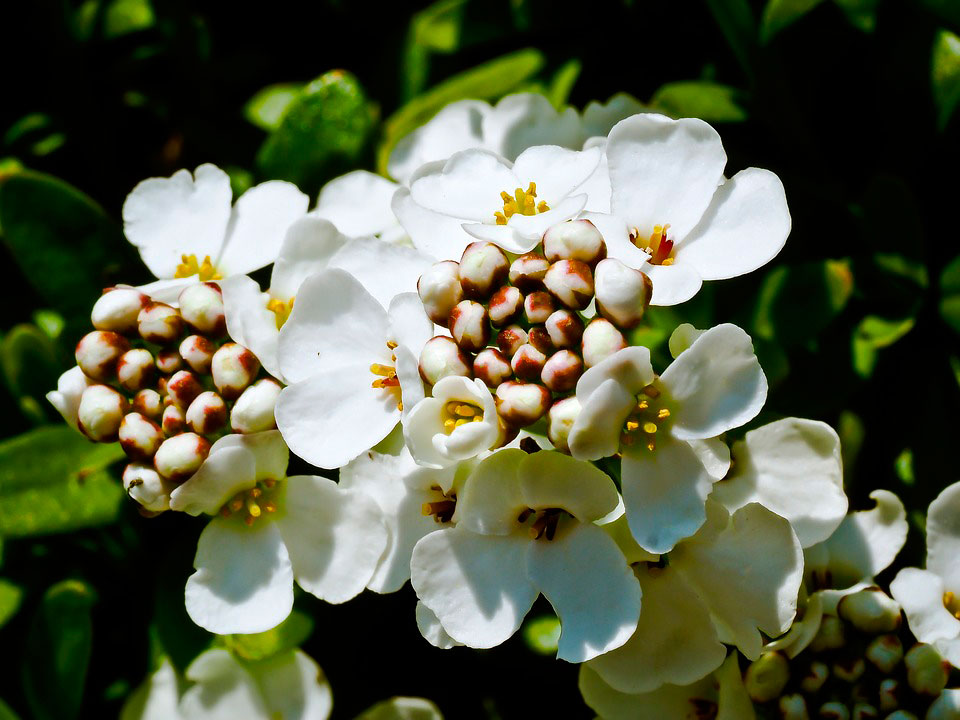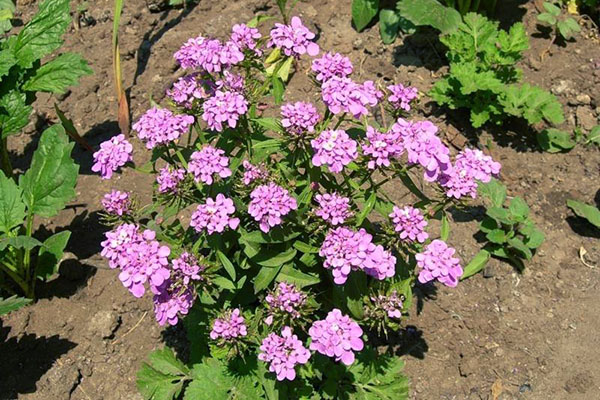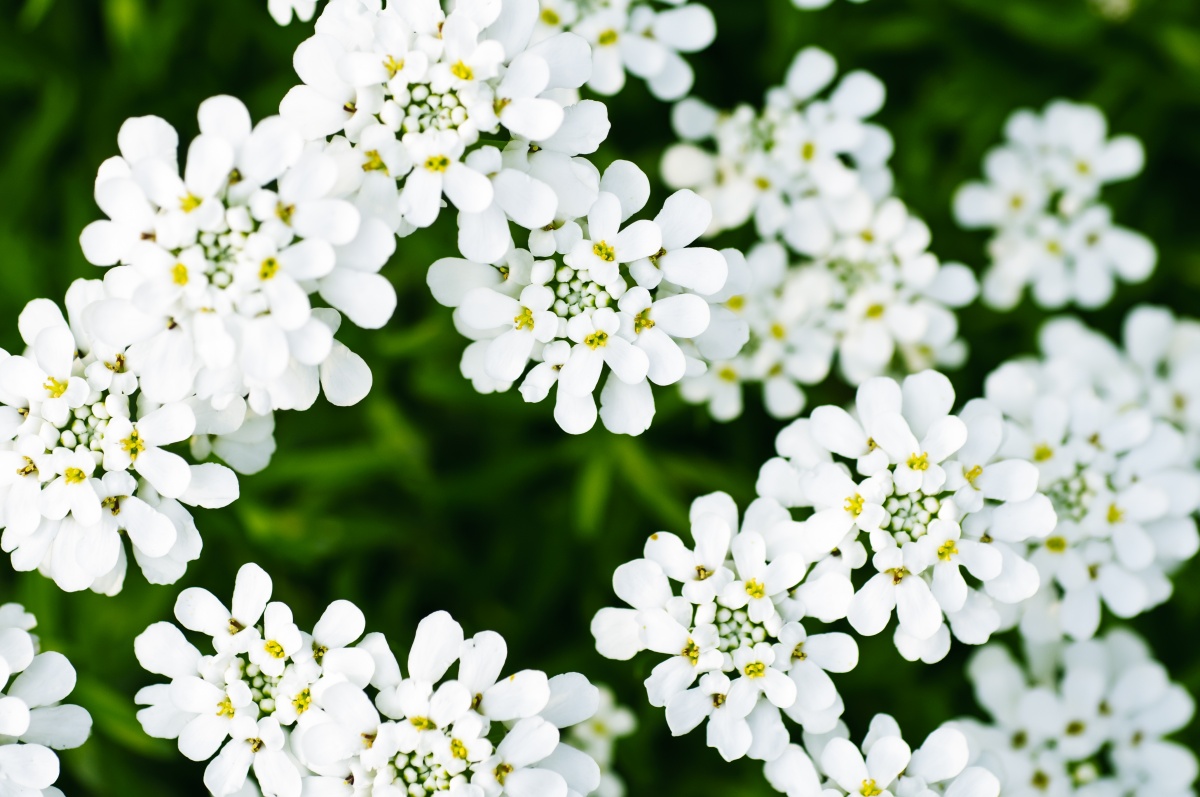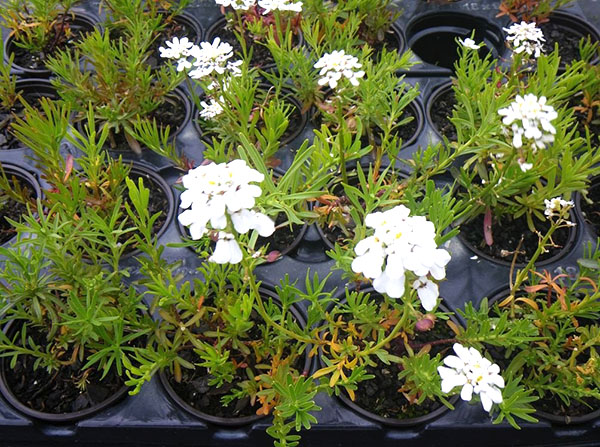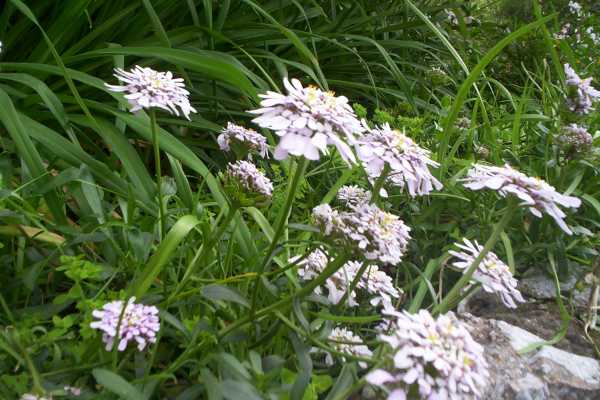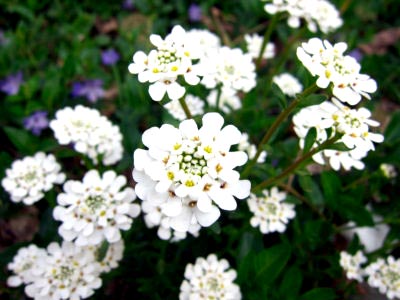Care and maintenance
Iberis flowers are not whimsical at all, they develop well in everyone who wants to plant them on their site. The most important thing when landing Iberis and care him - to follow some simple rules. The site for planting is chosen open, well-lit, since in partial shade the flowering becomes less luxurious. The plant does not particularly suffer from drafts and a little cold snap.
Watering and feeding
Watering is necessary for the plant only in a very hot and dry period. During irrigation, the land must be filled with water to the maximum depth, avoiding stagnation of fluid at the root plant systems. Too rare watering does not have a negative effect on decorative annual or perennial crops.
The amount and components of dressings may vary depending on the type and quality characteristics of the soil on the site. On too poor soils or soils with insufficient nutritional characteristics, standard compound fertilizers are applied only a few times a year. You can use nitrofoskoy fertilizing in summer and spring. A very good effect is provided by the introduction of organic matter by introducing or mulching the soil around the plants with compost.
Pruning and wintering
An event such as pruning is essential. This procedure allows you to get the most rich and long-lasting flowering. All fading shoots should be removed regularly. The main pruning is done immediately after flowering. At this stage, the aerial part of the perennial must be shortened by about a third.
Iberises belong to a group of fairly frost-resistant ornamental garden plants, but they are capable of freezing out in snowless and cruel winters. Among other things, perennials react extremely poorly to sudden temperature changes and the change of severe frost to warm weather.
To guarantee a beautifully flowering garden culture a comfortable wintering, it is necessary even in the middle zone of our country to apply a shelter since the last decade of autumn. Fallen leaves, spruce branches, or ordinary dry brushwood with small layers of straw and hay can serve as good protection from the cold.
Diseases and parasites
The shrub is generally resistant to disease and parasites. But in rare cases, it is affected by such pests:
- Rhizoctonis - in a cool spring with constant rains, gray spots appear on the roots and at the base, the shoots die. For treatment, a solution of lime and fertilizers is added to the ground, the soil is disinfected with special fungicides. Completely and completely dead bushes are destroyed by burning.
- The earthen flea is a beetle that destroys leaves. The growth takes on an uneven silhouette. Tracks are found inside the green cover structure. For treatment, insecticides are used, as well as regular moistening of the soil.
- Mealybug is an insect that sucks juice. Representatives are required to be removed and treated with garlic tincture or soapy water. In case of a large invasion, only chemical treatment will help out.
- Cruciferous keel - the appearance of a fungus in the ground. The disease forms growths on the roots that inhibit development and growth. Leaves change color to pale yellow, wither. The disease is reflected more clearly on young shoots. The disease is incurable. The only struggle is on the eve of planting, the seeds are treated with chemicals.
- Cabbage aphid - sucks the juice, destroying the plant. White spots appear on the leaves, a week after infection, the shoots wither, the buds wither and fall off.Treatment - the use of tobacco broth and chemicals (sulfate-anabasine).
Thus, a few pests can cause irreparable harm and destroy the flower. Proper care and continuous monitoring of the condition will help to notice the signs of illness at first.
Growing and planting Iberis
Iberis is most often grown from seed, although perennial species can be propagated vegetatively. Seeds are sown directly into open ground or previously for seedlings. Flowering usually begins 2-3 months after germination. In open ground, seeds are sown in mid-April. To prolong flowering, gardeners practice sowing in several stages at intervals of 3-4 weeks. Then early flowering plants will be replaced by later crops. Choose a well-lit, open area with fertile, loose soil
The seeds are spread evenly into shallow grooves and carefully sprinkled with earth. Water the soil if necessary
When shoots appear, they are thinned out so that the distance between the plants is 12-15 cm.
For growing seedlings, shallow boxes with sandy-peat soil are prepared. Small seeds are spread on the surface and pressed with a plank. You do not need to sprinkle on top. The container is covered with glass and placed in a well-lit, warm place (+ 15 ... + 18 ° C). Periodically, you need to ventilate and spray crops. Seedlings appear within 1-4 weeks. From this moment, the shelter is removed. Grown plants dive in separate pots.

Planting seedlings in open ground is carried out in mid-May, when the danger of night frosts disappears. In the south, you can do this earlier. The soil should be well-drained, loamy or sandy loam. Neutral or alkaline soils are preferred. If necessary, lime is added to the ground
During planting, it is important not to damage the fragile rhizomes of the Iberis. The distance between plants depends on the variety and is 15-25 cm
It is not necessary to deepen the root collar
Then the soil is tamped and watered carefully.
Large, heavily overgrown perennial bushes in early spring can be divided into several parts. For this, the plant is dug up and cut at the base. You should immediately plant the cuttings in the soil.
Apical cuttings can be cut and rooted during the summer. To do this, cut shoots 8-10 cm long and root in moist soil under a hood. When young shoots begin to appear, the shelter is removed, and plants with a large clod of earth are transplanted to a permanent place. Lying shoots in the process of growth give rise to roots, they can be separated and planted in a new place during the whole warm season.

Disease and pest control
Caring for Iberis flowers after planting includes protection against various diseases and pests. Iberian is affected by cabbage aphids, earthen fleas, mealy worms. To get rid of fleas, it is recommended to moisten the soil around the bushes.
To get rid of aphids, infected plants are treated with a solution of potassium soap at the rate of 200 ml of the product in half a bucket of water. A week later, re-treatment is carried out. Get rid of mealy worms, twice, with a break of a week, treating plants with solutions of Mospilan, Aktar, Fitoverma.
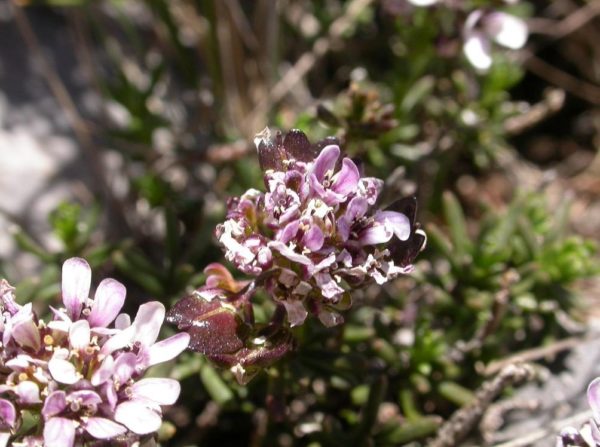
The root system is often susceptible to fungal diseases. For prophylaxis, before planting cuttings or sowing seeds, the area prepared for the Iberian is watered with a solution of Fungicide.
When a fungal disease nevertheless begins, and the roots rot from it, the infected flowers are dug up and burned, and the place of their growth is disinfected. This plant is resistant to other diseases and insect infestation. When watering according to the rules, fungi will not be scary to the roots of the Iberian.

Correct care! Prevention of all diseases of the Iberian is the correct care.
Description of the plant
Iberis (Iberis), or Iberian, is a herb that is directly related to the cruciferous or cabbage family. Such a plant is also often called a variegated, stennik or peppercorn. In natural conditions, this plant can be found in the mountains of Asia Minor and southern Europe, the southern part of Ukraine, in the Caucasus, in the Crimea and in the lower reaches of the Don.
This genus unites about 40 different species, while they are represented by perennials and annuals, which can be thermophilic or frost-resistant, and there are also herbaceous and semi-shrub types. Such a plant is often used in order to create edging of lawns, palisades, and also to decorate alpine slides and masonry. These flowers are suitable for cutting and are often used to form bridal bouquets.
Varieties and types
In nature, there are frost-resistant and thermophilic perennial Iberis, erect and creeping. These are semi-shrubs up to 50 centimeters in height, have small flowers, picked up in umbellate inflorescences and lanceolate leaves. As a rule, there are white, purple, lilac, lilac, and also pink color.
Among the huge number of various varieties of these perennial plants, we will single out the most popular ones:
- Rocky. It is an evergreen species that forms round curtains. It looks great during flowering, as it feels like white fluffy snow has fallen on the lush green grass.
- Crimean. Representatives of this species reach only 5-10 centimeters in height. They have pawed leaves of a gray-green hue and lilac buds, which turn white when opened.
- Gibraltar. This type of Iberis is characterized by the presence of a huge number of small pink flowers. Its level is 25 centimeters, and its diameter is up to 40 centimeters. The most famous type of Gibraltar Iberis is Gibraltar Candytaft (a bush with lilac-white flowers).
-
Evergreen. The oblong leaves of these perennials are dark green in color and are approximately seven centimeters long. Umbellate inflorescences are presented in white. Its most famous types:
- Miniature flock (up to 15 centimeters, often used in landscape design);
- Dana (generously flowering variety, up to 15 centimeters high);
- Findall (approximately 20 centimeters high, forms curtains).
Use in design
Iberis is simply an indispensable plant for group setting on the slopes. They are decorated with alpine slides and rockeries. Very often, the bushes are planted along the paths, they decorate the borders. Juicy green Iberis bushes look great in the perspective of dark needles. In flower beds, Iberis is planted close to bells, phlox, gazania, marigolds.
Medium-sized species of Iberis have very beautiful inflorescences on large stems, which makes it possible to use this plant for the formation of bouquets. Iberis stays in a vase for quite a long time - up to 10 days. In some states, even flower shoots are used as food. Iberis tastes sweet and somewhat like broccoli.
Iberis, when planting and caring for the garden, is the best option even for the most inexperienced and young flower growers.
If you like undemanding, but at the same time very beautifully flowering plants, then be sure to plant Iberis in your garden plot or in your country house. The plant requires almost no maintenance, but it will become a bright, unforgettable decoration of your summer garden.
Multicolored Iberis bushes will definitely attract a lot of attention throughout the summer.
GROWING IBERIS FROM SEEDS
Growing a golden flower is not difficult. You just need to adhere to simple rules:
- Choose a landing site. The bogeyman is a sun lover. Therefore, the place should be open to sunlight. The shade, even weak, can cause the death of the plant in the future.
- The soil.The flower does not tolerate stagnant moisture. Therefore, a well-drained sandy or loamy soil is the key to healthy growth and lush flowering of the Iberian.
- Irrigation is abundant, but rare. Usually held on dry summer days.
- Top dressing. Optional, but if you pamper the flower with complex fertilizers, then it will thank you with more lush, fragrant flowering.
If you plant different varieties of gold flowers in large groups, then in the process of cross-pollination you can get hybrids with special colors. It should be remembered that this is an invading plant. It is able to fill all the free space with itself.
Reproduction of Sesleria
Seeds
Seeds are sown in open ground in spring. Ordinary loose soil is suitable, before sowing it is moistened and slightly loosened. Seedlings can be expected in about 2 weeks. Sesleria sprouts are well watered and, if necessary, thinned out.
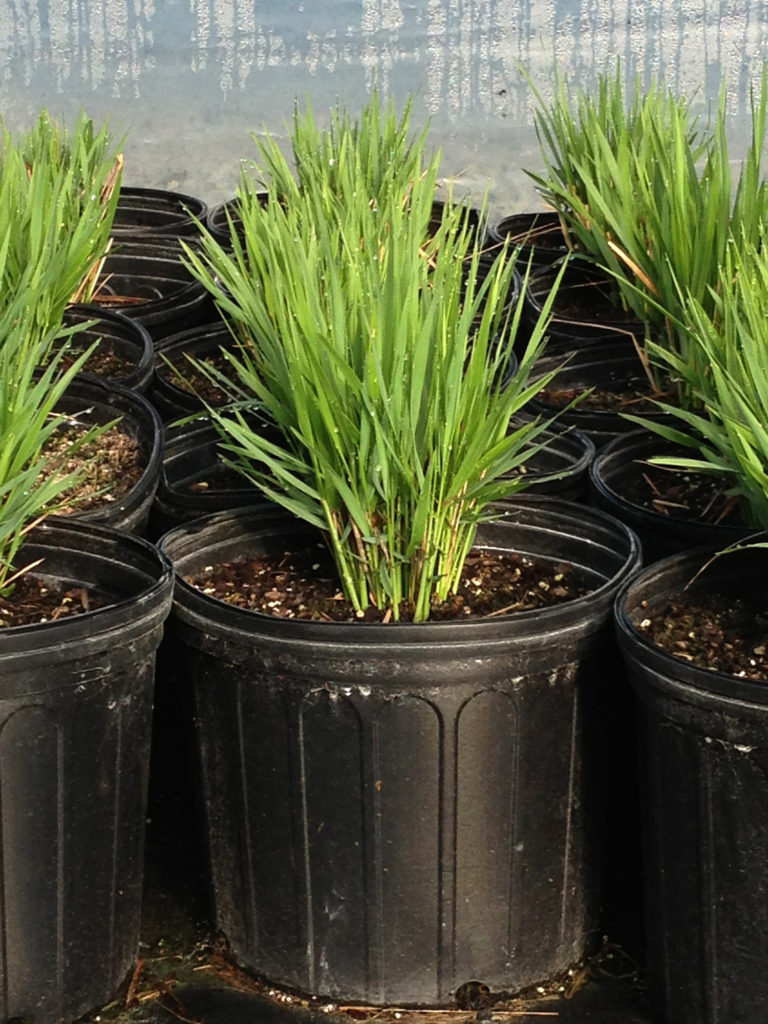
By dividing
It is advisable to spend it in spring or autumn. Sesleria roots are very neatly divided into parts. Treat the incision site well with crushed activated carbon to prevent decay.
Delenki are planted in the ground and watered well. If the roots of the sesleria were accidentally damaged, then you can spill it with a rooting solution. You can fertilize the plant for the first time in a month.
SOWING IBERIS
You can sow seeds in two ways:
SEEDLING WAY
The prepared planting material is sown in seedling containers filled with a substrate. Sprinkle with sand on top. It is necessary to ensure that the thickness of the soil over the seeds does not exceed one millimeter.
Further, they create a greenhouse effect by covering the containers with glass or film. If necessary, the seedlings are watered by spraying with water to avoid washing out the seeds. Since the plant does not tolerate transplanting, it is planted in a flower bed together with a container.
PLANTING SEEDS IN OPEN GROUND
Sow the planting material shallowly about 6–8 cm. The first shoots will appear in a week. After that, the crops should be thinned out, leaving a distance between the shoots of about 20 cm. This will enable the flower to grow more flowering and fluffy.
Cutting is carried out by cutting the trunk of last year's plant into fragments 8–10 cm long. First, these pieces are planted in partial shade, and after germination, in a permanent place. Cuttings are planted from the end of summer. Consequently, the transplant will be in the spring of next year.
By dividing the bush, the Iberian is propagated in the spring. At the same time, the shoots are shortened by a third, since the flower does not take root well. The separated stems are placed in holes with prepared, drained soil.
Reproduction
Those who are delighted with the umbrella Iberis are wondering how to propagate this plant.
On this topic:
BACK
FORWARD
1 of 2
There are two ways: vegetative and seed. For the umbrella Iberis, the second method is preferable - even a novice gardener can cope with this task.
Cuttings
After flowering, cuttings are cut from the plant up to 5 cm long. Then they can either be planted in a greenhouse for rooting, or directly into the ground. In order for the plant to give roots faster, phytohormones are used. If your goal is to get a floral carpet, cuttings should initially be planted at least 15 cm apart, since the plant grows quickly and blooms very luxuriantly.
Iberis umbrella growing from seeds (with photo)
On this topic:
BACK
FORWARD
1 of 2
Planting material can be collected with your own hands. Don't feel like messing around? Then go to the store. The seeds of the umbrella Iberis are located in the pod.
The collected pods are laid out for a while for drying, then they are opened, the seeds are pulled out and placed in a dry place inaccessible to the sun's rays.
Experienced gardeners advise making seedlings first, and then replanting them in open ground. But many choose for themselves sowing seeds directly into the soil to a permanent place.
In the second case, sowing is carried out as soon as the first warm days come, but not earlier than the first decade of April. To begin with, shallow grooves are made in the beds and seeds are planted to a depth of no more than 1 cm.
For seedlings, sowing is performed in March, so that by May the young growth has grown, and it can be transplanted. The substrate is preliminarily moistened, and then the seeds are placed to a depth of 1 mm.
To obtain good germination, the containers are covered with glass or film, or placed in a warm place. At the same time, one should not forget about regular airing and diffused light so that the plants are not "fried".
If you want to achieve flowering throughout the summer, seedlings should be planted in the ground twice: the first time in May, the second in July. If you followed all the requirements, flowering will come within 1.5 months after planting.
Iberis umbellifera flowers found wide application in landscape designwhere it is combined in various compositions. It looks great in rockeries, rock gardens, on natural slopes, along the paths. It can be placed next to conifers, alyssum, flowering shrubs, cineraria, herbal cloves. It is also used to create wedding bouquets.

